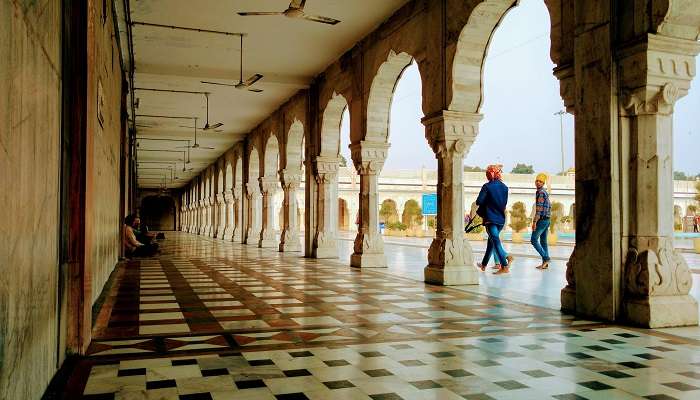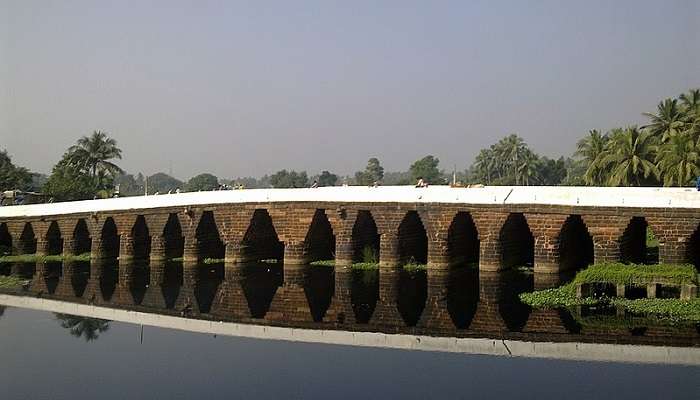Narasimha Temple Is A Peaceful Hotspot Of Absolute Spirituality You Can Visit In 2026

Located in Puri, Odisha, the Narasimha Temple is a prominent religious shrine honouring Lord Narasimha, a manifestation of Lord Vishnu. This holy complex is fundamental to Odisha’s rich spiritual and cultural heritage. The historical relevance, architectural magnificence, and spiritual significance of the Narasimha Temple are well-known. Worshipped as a ferocious defender and the slayer of evil, Lord Narasimha is visited by devotees at the Narasimha Temple to ask for his blessings. Festivals like Narasimha Jayanti, which commemorates the advent of Lord Narasimha to defend his follower Prahlada and defeat the demon king Hiranyakashipu, give the temple a unique importance.
An Age-Old History Comes Alive At The Narasimha Temple

The history of the Narasimha Temple is intricately tied to the larger religious and cultural context of Puri and the Jagannath Temple. Puri, formerly known as Sri Kshetra, has been a well-known religious hub for ages. Although the actual era of the temple’s establishment is unknown, Odisha was controlled by the Ganga dynasty from the 11th to the 15th century, so it is assumed that the temple was constructed during that time. The earliest historical mentions of these 2 temples are from the accounts of Spanish sailors who came looking for the new world in the 16th century and used these fabulous architectural structures as landmarks to map the land.
The Ganga dynasty, particularly King Anantavarman Chodaganga Deva, is credited with constructing and patronising several temples in Odisha, including the Jagannath Temple. The Narasimha Temple is thought to have been built during this period to enhance the region’s religious sanctity. This temple, being a religious hotspot, has been attacked throughout history, but the stories of these assaults are even more fascinating. When Kalapahad, a Muslim general of the Bengal sultanate, encountered the picture of Shanta Narasimha while attacking Puri and shattering the deities of other temples, his rage subsided, and he could not break the deity as intended. Santa Narasimha has human-like traits. He has an extended tongue, a big curling moustache, and a keen human nose. The Deities are visible from the entryway. However, non-Hindus are not allowed inside the temple.
Also Read: Places To Visit In Puri
A Testament To The Cultural Heritage Of Odisha

The Narasimha Temple is an excellent example of Kalinga architecture, characterized by its intricate carvings, towering spires, and detailed iconography. The temple’s structure consists of a vimana, or the sanctum sanctorum, a Jagamohana, or assembly hall, and a Natamandapa, a festival hall. The vimana of the Narasimha Temple is adorned with elaborate carvings depicting various forms of Lord Vishnu, mythological scenes, and floral motifs.
The sanctum houses the idol of Lord Narasimha, shown in his classic form, half-man and half-lion, signifying the incarnation of Vishnu to destroy the demon Hiranyakashipu. The Narasimha Temple is an architectural marvel with deep religious significance and historical significance in the region. According to local beliefs, the temple is a protective shrine for the Jagannath Temple. It is said that Lord Narasimha, being a fierce and powerful deity, protects the holy city of Puri and its main temple from evil forces.
Places To Visit In And Around The Narasimha Temple
Some of the most popular places to visit around Narasimha Temple are mentioned below:
1. Jagannath Temple

The Jagannath Temple is a Hindu temple dedicated to the god Jagannath, a form of the Hindu god Vishnu. According to temple chronicles, the main Jagannath temple in Puri was constructed by King Indradyumna of Avanti. It is not the primary Jagannath temple, but the current temple was built on the site of earlier temples inside the property starting in the ninth century. Legends from the area associate the idols with the local aboriginal tribes. The three main deities are hauled by enormous, ornately painted temple vehicles during the temple’s yearly Ratha Yatra or chariot festival. The picture of Jagannath is composed of wood, as opposed to the stone and metal images seen in other Hindu temples, and it is ceremoniously changed every 12 – 19 years by a perfect duplicate. It is especially well-known due to the numerous traditions that hold that Krishna’s heart was positioned here. The heart is harmed by the material used to make it, therefore it needs to be replaced every seven years.
Address: Puri, Odisha 752001
Timings: 6 am–9 pm
Related Post: Things To Do In Puri
2. Atharnala Bridge

At the entrance of Puri, there’s a famous laterite stone bridge called Atharanala that spans the Madhupurstream. Based on the architectural foundation and construction materials, the Indira Gandhi National Centre for the Arts assessment dates the tower to the second half of the 18th century AD, when Maratha power prevailed in the town. The current bridge was built immediately above the first, which dates back to the 13th century AD. To properly release the excess water from the Saradhar River at the time, the Atharanala Bridge was rebuilt with an extra trench, bringing the total number of ditches to 19. The Atharanala Bridge features a mediaeval architectural design of pillars and arches and is constructed using laterite and lime mortar in the ashlar masonry construction method. It has a north-south orientation. The bridge is eighteen stories long, eleven stories wide, and has eighteen arches between seven and sixteen feet in diameter. The Jagannath Temple may be seen from the bridge’s breathtaking long-range panoramic perspective.
Address: RR9J+VPV, Atthara Nala, Puri, Odisha 752002
Timings: Open 24 hours
3. Konark Sun Temple

The Konark Sun Temple is a 13th-century Hindu sun temple located in the Puri region of Odisha, approximately 35 km northeast of Puri city. What’s left of the temple complex, dedicated to the Hindu sun deity Surya, resembles a 100-foot-tall chariot with enormous wheels and horses that are all carved out of stone. Most of this edifice, including the massive shikara tower over the sanctuary, is in ruins now owing to weather and poor care; at one point, it was considerably higher than the mandapa that still stands. The structure was originally almost 200 feet high. The complex iconography, motifs, and artwork of the surviving structures and pieces have earned them notoriety. There is still debate on the exact cause of the Konark temple’s demise. Theories abound, ranging from the intentional demolition of the temple by Muslim forces in the fifteenth and seventeenth centuries to natural deterioration. Hindus continue to make this place a prominent destination for pilgrimages, coming here annually for important festivals, and it was designated a UNESCO World Heritage place in 1984.
Address: Konark, Odisha 752111
Timings: 6 am–8 pm
You May Also Like To Read: Offbeat Places In Puri
The great Jagannath temple might sometimes overshadow the Narasimha temple at Puri. Still, its historical and cultural significance to the state of Odisha can be felt in multitudes once you visit that place and witness that spectacular structure yourself. So, remember these places and facts when planning your trip to Puri.
For our editorial codes of conduct and copyright disclaimer, please click here.
Cover Image Source: Pexels
Frequently Asked Questions About Narasimha Temple
Where is the Narasimha Temple located?
This temple is located just 3 km from the city centre. It is an easy 20-minute walk or can easily be traversed by a drive as well.
What is the significance of the Narasimha temple?
This temple is said to be devoted to lors Narasimha who is an incarnation of Vishnu and the destroyer of evil. He said to be the patron guardian and protector of this holy city.
How many idols are kept inside the Narasimha temple?
There are 2 idols facing back to back kept inside the temple. Both are different faces of the lord Narasimha. The one facing the devotees is the calmer demeanour of the lord. In contrast, the one facing away is said to be the angry form of the lord or his inner state of mind.
What does lord Narasimha look like?
He has an extended tongue, a big curling moustache, and a keen human nose. He is a half-man half-lion incarnation of the Vishnu.
How far is the Narasimha temple from Bangalore?
The temple is 1435 km away from Bangalore, which is a 26-hour drive. It is advised to make this trip by train or flight.
People Also Read:
Shivoham Shiva Temple Chintaman Ganesh Temple Omkareshwar Temple

With a passion for exploring and travelling to the roads long forgotten, experience the world through enthralling stories and adventures. Join me as I share my experiences at some of the world’s most popular tourist destinations and quench that pestering curiosity with something exciting!











